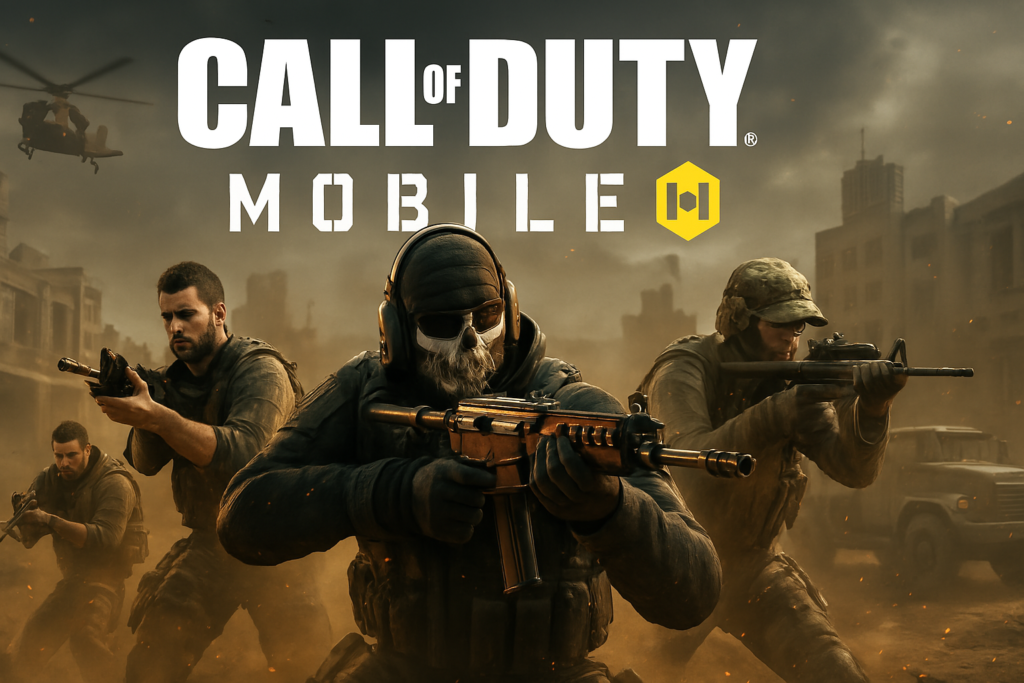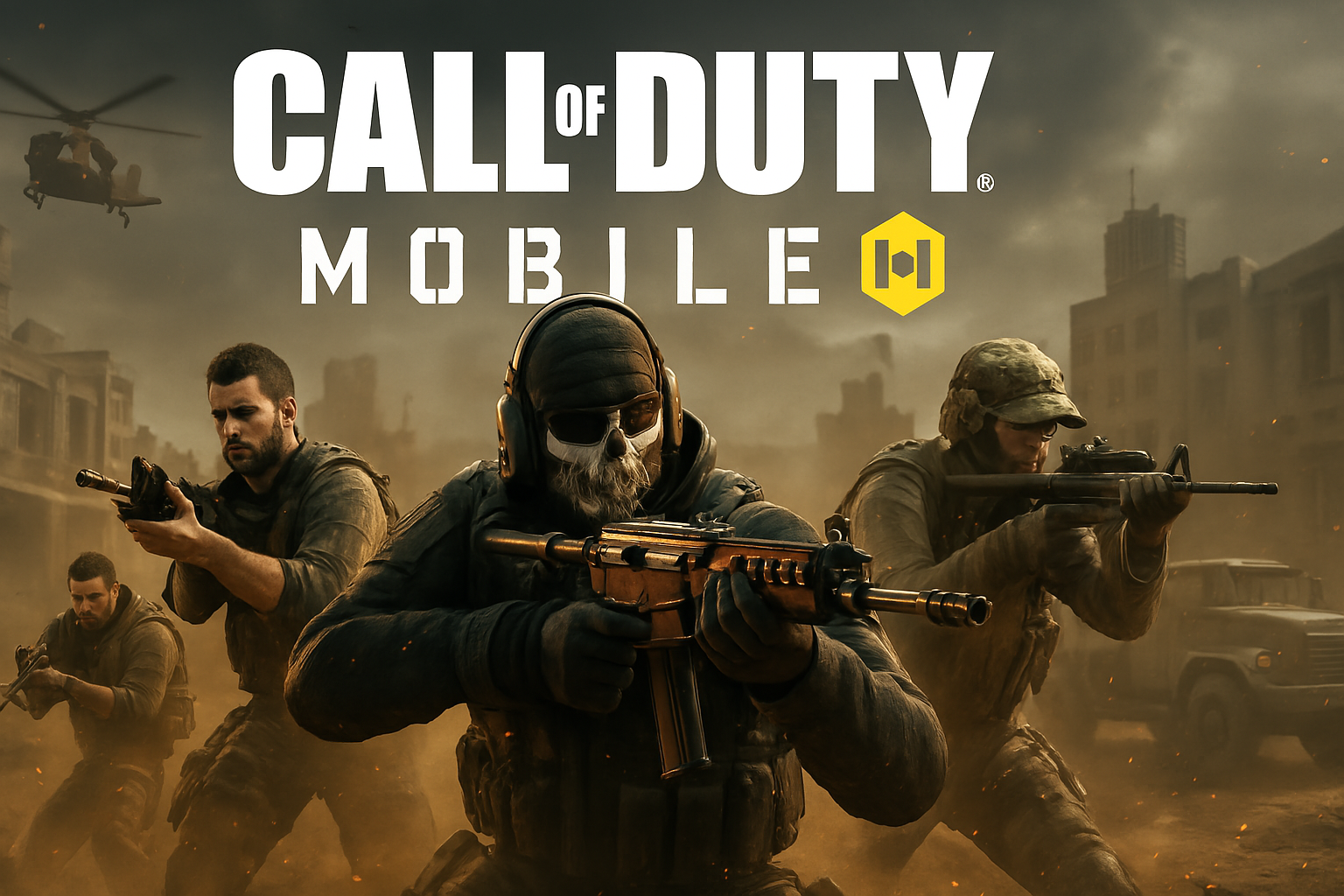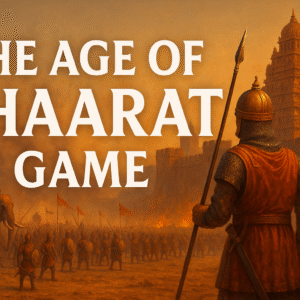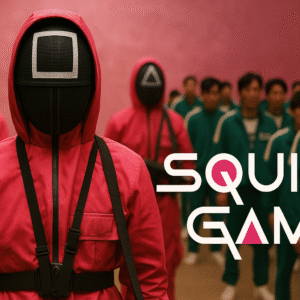Table of Contents
Call of Duty: Mobile Esports News – A Ground-Level Look into a Booming Scene
The mobile gaming industry has evolved rapidly, and Call of Duty: Mobile (CODM) has cemented its place as one of the frontrunners. The rise of CODM esports news is no longer just about big events—it’s now tied deeply with career aspirations, global competitions, and personal stories of struggle and victory. As someone who has followed this journey from the sidelines—and sometimes as a participant—I’ll walk you through what’s really going on behind the polished banners of tournaments.
The Evolution of CODM Esports: From Casual to Competitive
Back in 2019, Call of Duty: Mobile was launched with a simple goal—to bring the legendary FPS franchise to mobile users. No one expected the competitive scene to explode the way it did. In the early months, ranked matches and clan wars were all players had to feel a sense of competition. Fast forward to 2020, and we witnessed the first Call of Duty: Mobile World Championship, backed by Sony and Activision with a $1 million prize pool. It was a clear signal: mobile esports had arrived.
During this time, I was part of a small semi-pro squad. We weren’t trying to be champions, but we grinded for ranked leaderboard positions and scrimmed regularly. The effort needed to stay competitive on mobile surprised us. Mobile esports, we realized, wasn’t a joke anymore.
What began as community-driven tournaments soon transformed into regionally structured leagues and sponsored global events. This growth pattern is similar to what PUBG Mobile and Free Fire experienced. However, CODM brought a unique flavor to mobile FPS gaming—polished mechanics, iconic maps, and fan-favorite modes from the main franchise.
Reading codm esports news in 2021 started to feel like reading PC-level tournament updates—complete with team transfers, sponsorships, and new metas. It wasn’t just about winning matches anymore—it was about adapting to an evolving professional environment.
The Big Names in CODM Esports: Who’s Leading the Charge?
Some teams in CODM esports news keep popping up for good reason—they’ve dominated the scene through strategy, consistency, and adaptability. Teams like Tribe Gaming, GodLike Esports, and Vitality have created benchmarks that newcomers aspire to beat.
Take Tribe Gaming, for instance. The team’s performance during the 2023 CODM World Championship made headlines. Their focus on communication and role clarity set them apart. In fact, I remember watching their match against Luminosity Gaming and being blown away by how coordinated their rotations were on Summit and Firing Range—maps known for chaotic firefights.
Then there’s GodLike Esports, representing India. What makes their journey even more inspiring is the backdrop of growing mobile gaming infrastructure in India. From modest bootcamps to securing brand endorsements, the transformation has been documented in both local gaming forums and global codm esports news outlets.
Even underdogs like Skade and Nova Esports have shown strong performances. These teams often get overlooked in mainstream discussions but have become dark horses during regional qualifiers. I personally followed Nova’s journey during the Eastern finals and appreciated their discipline—something that often goes unnoticed unless you’re watching their POV streams or scrim reviews.
These teams are more than just rosters; they represent the growing professionalism in mobile gaming. Coaching staff, analysts, and content creators are now part of the package. Following their development is one of the best parts of staying updated with codm esports news.
Player Spotlight: Stories of Grit, Growth, and Game Sense

Behind every major play in a tournament is a player who spent hours practicing on low ping, memorizing recoil patterns, or tweaking HUD layouts to squeeze out more precision. These are the kinds of personal stories that often get lost in broader codm esports news, but they’re the ones that truly show what the scene is about.
One standout example is “Heathens”, a Filipino player who went from playing on a broken phone in internet cafés to joining one of the top APAC teams. His journey is a reminder that mobile esports has leveled the playing field. You don’t need a gaming rig worth lakhs—just a working phone, relentless discipline, and a bit of luck.
Another well-known name is Lucas “Marshy” James from the U.S., who transitioned from console Call of Duty titles to CODM professionally. His move wasn’t easy. The control scheme change, muscle memory adjustments, and pacing differences meant starting over. But within a year, Marshy became a star flex player known for clutch uplink plays and map control.
During my own competitive run, I met players who practiced aim drills at 4 a.m. before school or college. They weren’t being paid yet. They weren’t even sure they’d make it. But they had hope—fueled by what they saw in daily codm esports news and tournament broadcasts.
These human experiences, while rarely reported in mainstream articles, are the backbone of the CODM esports ecosystem. They show how gaming has become more than a pastime—it’s a passion-fueled pursuit, often led by teenagers chasing a shot at glory.
Tournament Structure and Prize Pools: Inside the World Championship Scene
The Call of Duty: Mobile World Championship is the biggest event in the game’s competitive calendar, and for good reason. Sponsored by Sony and hosted by Activision, the event has matured rapidly since its launch in 2020. Every year, more regions get structured qualifiers, and the stakes keep getting higher. In 2023, the total prize pool exceeded $1.7 million—making headlines in codm esports news and setting a new standard for mobile FPS esports.
What makes this tournament structure so appealing is its layered approach. It starts with open qualifiers, where literally anyone with a team can participate. This open-door policy creates space for unknown players to rise. Stage 2 filters serious squads, while Stage 3 brings in regional qualifiers. By the time teams reach the final stage, they’ve battled through hundreds of games.
I remember watching a lesser-known team from LATAM qualify for Stage 4 in 2022. They didn’t have coaches or a manager. They played with basic headphones and mid-range phones. And yet, they made it—taking down a seeded team in the process. It was the kind of underdog story that rarely makes it into broader headlines but gets shared widely in regional codm esports news communities.
Beyond the thrill of competition, the tournament infrastructure provides players with global visibility. This leads to sponsorships, team contracts, and sometimes, a full-time gaming career. The rise of these opportunities has fueled a serious competitive environment that was once only reserved for PC and console gamers.
For many aspiring players, these tournaments are more than just games—they’re the gateway to real financial freedom and global recognition.
Game Meta and Updates: How Balance Shifts Shape the Competitive Scene
If you’ve followed any competitive shooter, you know the meta—or “most effective tactics available”—can make or break a team. In CODM esports news, meta changes are often central to discussion after every season update.
Call of Duty: Mobile has a unique rhythm when it comes to updates. Each new season typically brings a balance patch, weapon nerfs and buffs, and sometimes new scorestreaks or operator skills. These adjustments, while aimed at improving gameplay, can throw off even the most experienced teams.
A good example is the DR-H and Holger meta in late 2022. These weapons dominated scrims and tournaments for months. Then came a balance patch that nerfed the Holger’s ADS speed and recoil stability. Almost overnight, teams had to reconfigure their loadouts and adapt to new recoil patterns.
I’ve personally seen how disruptive these changes can be. During one of our community tournaments, my team had practiced for weeks using the KN-44 as our go-to AR. But right before the semi-finals, the gun received a silent recoil tweak. That one update forced us to switch mid-tournament—and we lost because our subs weren’t ready with the new meta weapon.
This unpredictability makes the game exciting but also incredibly demanding at the pro level. Coaches and analysts now have to work overtime to study patch notes, scrim results, and movement mechanics. Codm esports news platforms often publish meta analysis videos within 24 hours of a patch, breaking down what weapons to watch out for and how it’ll shift the upcoming tournaments.
For players and fans alike, the constantly evolving meta is both a challenge and a thrill. It ensures no team stays on top for long without constant adaptation.
Community, Content Creators, and the Role of Streaming
The CODM esports news world isn’t just shaped by professional matches. A huge part of its energy comes from the community—especially content creators and streamers who keep the fanbase alive between tournaments.
Streamers like iFerg, Bobby Plays, and HawksNest have built massive followings by covering competitive matches, reviewing loadouts, and offering breakdowns of player performance. While they’re not always part of the esports scene directly, their commentary adds another layer of depth that fans love.
I’ve followed Bobby’s channel for over three years. What sets him apart is how he breaks down the logic behind every pro match—why a player held an angle, or how a team executed a split-push in Domination mode. His breakdowns help new players understand high-level strategy without feeling overwhelmed. This is one reason his content is often cited across codm esports news discussions online.
Apart from big names, regional creators have stepped up. Channels focused on Indian, LATAM, and Southeast Asian communities bring a localized flavor to competitive coverage. These creators not only stream scrims and community tournaments but also interview local pros, analyze meta shifts, and teach tactical rotations.
What’s inspiring is how many of them started with just screen recordings and cheap mics. Their rise proves that esports isn’t limited to pros—it’s a whole ecosystem where streamers, analysts, editors, and even meme creators play vital roles.
What’s inspiring is how many of them started with just screen recordings and cheap mics. Their rise proves that esports isn’t limited to pros—it’s a whole ecosystem where streamers, analysts, editors, and even meme creators play vital roles.
For many fans, the only way to access high-level gameplay insights is through these creators. That’s why any comprehensive look at codm esports news would be incomplete without mentioning their contributions.
Sponsorships, Brand Deals, and the Business of CODM Esports
While gameplay gets the spotlight, there’s another layer to codm esports news that often goes underreported—the business side. As the competitive scene has grown, so has its attractiveness to brands looking to tap into a hyper-engaged audience of mobile gamers.
In 2023, several major teams signed partnerships with smartphone brands like ASUS ROG, OnePlus, and Samsung. These brands saw a clear win-win—pro players get high-performance devices, while the brand gets exposure through jersey logos, device shout-outs, and sponsored streams. For example, Tribe Gaming’s partnership with Samsung in late 2023 included both hardware support and co-branded content. This move was widely covered in both gaming media and mainstream tech publications.
Streaming platforms are also entering the scene. Trovo, Nimo TV, and even YouTube Gaming have struck deals with creators and esports organizations. It’s a clear signal that mobile esports has reached a point where it drives serious viewership and engagement.
From my personal experience as a freelance content strategist for a mobile gaming startup, I’ve seen firsthand how brands are now allocating entire marketing budgets to CODM esports events. The cost per engagement is low compared to traditional advertising, and the loyalty of these gaming communities is unmatched.
What’s particularly interesting is how micro-sponsorships are becoming more common. I’ve seen lesser-known teams in Tier 2 leagues receive offers from gaming chair companies, energy drink startups, and local telecom providers. These deals may not be worth millions, but they provide the basic funding teams need to train, travel, and grow.
The increase in brand involvement means we’re likely to see more financial stability and professionalism in the scene. This business angle has become a crucial component of current codm esports news.
Challenges in CODM Esports: Cheating, Device Disparity, and Burnout
Every rising esport has its fair share of struggles, and codm esports news has been no exception. As much as the scene has grown, several issues continue to hinder its long-term potential—chief among them being cheating, hardware inequality, and player burnout.
Cheating in online qualifiers remains a big concern. Despite efforts by Activision to strengthen anti-cheat software, players still find ways to exploit loopholes, especially in open qualifiers where the oversight is weaker. In 2022, a prominent team from the NA region was disqualified from Stage 2 after footage revealed use of macros and external scripts. This was a big topic in the codm esports news circuit at the time, and rightly so—fans were outraged, and players demanded stronger regulation.
Then there’s the issue of device disparity. Unlike PC esports, where players use standardized machines, CODM competitors play on different devices with varying refresh rates, touch latency, and thermal throttling. A player on a 120Hz flagship phone undeniably has an advantage over someone using a 60Hz mid-range model. I’ve spoken to several semi-pro players from South Asia who admit they’re holding back their full potential simply because their device can’t handle high FPS during intense fights.
Lastly, we need to talk about mental and physical health. The pressure to perform, the endless hours of practice, and the demands of streaming have led to multiple cases of burnout. A player I used to scrim with took a three-month break after developing carpal tunnel syndrome—something rarely discussed but very real.
These challenges need to be addressed if CODM esports wants to grow sustainably. It’s one thing to make headlines, another to ensure long-term health—both for the game and its players.
The Road Ahead: What the Future Holds for CODM Esports
As we look toward the future, it’s clear that codm esports news will continue to evolve with the game’s ecosystem. But what does that future actually look like?
Firstly, cross-platform integration is a hot topic. Activision has teased shared rewards and player IDs between CODM and Warzone Mobile. This could lead to hybrid tournaments or shared leaderboards. If managed right, it can create a unified Call of Duty esports universe where mobile players are seen on the same tier as their console counterparts.
Another strong possibility is franchising. Just as Call of Duty League (CDL) on console uses city-based teams, CODM may adopt a similar model in the future. Cities like Mumbai, Jakarta, and São Paulo already have thriving fanbases that could support localized teams. If this happens, we’ll likely see a surge in local stadium events, merchandise sales, and fan meetups—taking esports beyond screens and into communities.
Tech advancements also play a role. Cloud gaming is gaining ground, and as internet access expands globally, lower-end devices may perform like flagships through off-device rendering. That would help solve the current problem of hardware disparity.
Lastly, we’re seeing governments become more open to mobile esports. India recently recognized esports under its Ministry of Youth Affairs and Sports. This policy shift could unlock better funding, training infrastructure, and visa support for international events.
In my opinion, having covered the scene for years and been involved at the grassroots level, the road ahead is bright—but only if stakeholders continue to prioritize player welfare, fair play, and community development. The passion is already there. What’s needed now is structure.
These possibilities will likely dominate the next wave of codm esports news.
More Than Just a Game – A Personal Reflection
I’ve been part of the CODM ecosystem since its early ranked lobbies and bootleg tournaments on Discord. Watching it grow from a casual pastime to a full-blown esports movement has been more than just entertaining—it’s been personal. When I scroll through the latest codm esports news, it’s not just stats and rosters—it’s stories, dreams, and the evolving identity of mobile gaming.
I remember my first custom lobby with serious players. We were crushed. But that match led to months of improvement, self-discipline, and understanding what it means to be part of a team. The community welcomed me, challenged me, and taught me. I may not have gone pro, but I found purpose—and that’s why this scene matters.
For every high-production World Championship event, there’s a teenager grinding in a village with a cracked screen. For every headline about Tribe Gaming’s victory, there’s a community team running unpaid scrims to stay relevant. These are the stories that define CODM esports.
As the scene continues to grow, I hope the coverage deepens too. Let’s talk about tactics, yes—but also burnout. Let’s highlight wins—but also the grind that made them possible. Let’s treat mobile esports with the same respect we give to PC titles.
Because whether it’s a million-dollar LAN or a local custom tourney, one truth remains: this isn’t just a game anymore. It’s a movement, a career path, a culture. And for those of us who’ve lived it, reported on it, or simply loved it—codm esports news is not just information. It’s part of who we are.
Why CODM Esports Is Just Getting Started
In a gaming world often dominated by PC and console headlines, mobile esports was once seen as the underdog. But that narrative is changing—and codm esports news is a testament to that shift. From million-dollar championships to homegrown talent rising from grassroots tournaments, CODM has carved its space with undeniable momentum.
The ecosystem isn’t perfect. There are real challenges—from hardware gaps to mental health, and from anti-cheat issues to inconsistent tournament infrastructure. But every scene has growing pains. What sets CODM apart is its resilience. Players, fans, organizers, and creators have built something from scratch, often with minimal resources but maximum passion.
I’ve watched rivals become teammates, streamers become pros, and casual players evolve into analysts. The community around CODM is unlike any other I’ve been part of. It’s collaborative, competitive, and constantly innovating.
Looking ahead, the biggest opportunities lie in deeper regional support, investment in young talent, and a push for global consistency in tournaments. If Activision and the community continue working together, CODM esports could become not just a thriving mobile game—but a dominant force across all platforms.
To all the new fans just discovering the scene: welcome. Dive into the matches, follow your favorite players, support your local teams, and stay tuned. Because trust me—the next chapter in codm esports news is going to be even bigger than the last.
And to the players grinding in silence, hoping for their shot: keep going. Your moment might be just one scrim away.




Leave a Reply